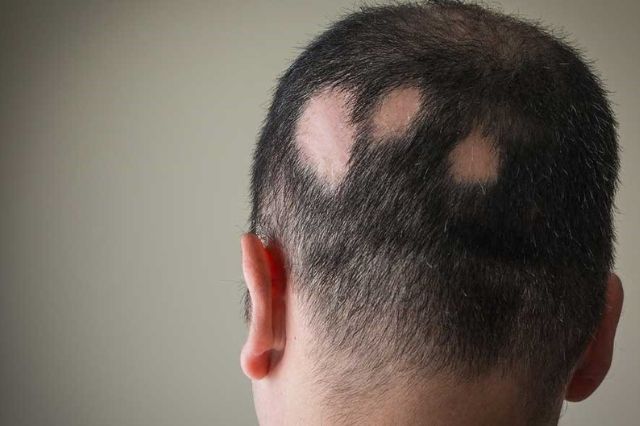In recent years, Turkey has emerged as a magnet for those seeking quality and affordable healthcare services, and hair transplant is no exception.
The term “hair transplant in Turkey” has become a buzzword, synonymous with state-of-the-art facilities, medical expertise, and a success rate that rivals even the most advanced nations.
Not only does Turkey offer an array of effective hair transplant techniques, but it also provides a comprehensive package that focuses on the patient’s holistic experience. This package often includes luxurious accommodations, a personal chauffeur, and interpreters, making the patient’s stay as comfortable as possible.
This fusion of high-caliber medical care, hospitality, and cost-effectiveness has made Turkey a go-to destination for hair transplant surgeries. The Turkish healthcare system prides itself on its internationally accredited hospitals, skilled practitioners, and advanced technologies. If that’s not enough, the welcoming atmosphere of the clinics adds a cherry on top, making your hair transplant Turkey experience an inviting and secure medical journey.
If you’re considering a hair transplant, Turkey offers a blend of elements that are hard to beat: technical proficiency, cutting-edge facilities, cost-effectiveness, and a human touch. With the allure of historical sites and exotic locales, many also opt to combine their medical journey with a brief holiday. So, why not get a makeover while enjoying the rich Turkish culture? In the paragraphs that follow, we’ll delve deep into the specifics of what makes Turkey the perfect setting for your new hair story.
Introduction: The Mosaic of Expertise and Affordability
Turkey has rapidly carved a niche for itself in the field of hair transplant surgery, blending technical proficiency, cutting-edge facilities, and cost-effectiveness. The Turkish healthcare system boasts internationally accredited hospitals and a galaxy of experienced surgeons. Add to that the warmth and hospitality of the clinics, and you’ve got an inviting, secure environment for your hair transplant journey.
Types of Hair Transplant Procedures Available in Turkey
Follicular Unit Extraction (FUE)
This method involves extracting individual follicular units and transplanting them to the balding areas. Minimal scarring and quicker recovery are its main highlights.
Follicular Unit Transplantation (FUT)
In FUT, a strip of skin with hair is taken from the donor area (usually the back of the head), and individual follicles are then harvested and placed on the thinning or balding areas.
Robotic Hair Transplant
This is a technologically advanced version of FUE, where robotic arms assist in the extraction and placement of hair follicles. It promises higher precision but comes at a premium cost.
Direct Hair Implantation (DHI)
In DHI, hairs are removed and implanted using a specialized, single-use tool for more precise and natural-looking results.
Health Problems Addressed by Hair Transplant

Types of alopecia
- Androgenic – commonly known as male or female pattern baldness.
- Cicatricial (scarring) – where scarring has led to permanent hair loss.
- Traction – usually caused by pulling force applied to the hair.
- Alopecia – an autoimmune disorder causing patchy hair loss.
Why Does Hair Loss Occur in Women?
Alopecia, commonly known as hair loss, can occur in women due to a variety of factors that may interplay, creating a complex tapestry of underlying causes. One of the most common causes is genetic predisposition, often referred to as female-pattern hair loss or androgenetic alopecia. This type of hair loss is influenced by hormonal changes and may become more pronounced after menopause when estrogen levels decline.
Hormonal fluctuations are also central to understanding why women may experience hair loss during certain life stages such as pregnancy, postpartum, and menopause. For instance, many women notice hair thinning or shedding post-pregnancy due to dropping levels of hormones that previously were high during pregnancy.
Stress is another significant factor that can lead to a temporary condition called telogen effluvium, where hair follicles enter a resting phase prematurely, leading to hair shedding. This can be triggered by emotional stress, physical trauma, surgery, or severe illness.
Lifestyle choices and environmental factors can also play a role in hair health. Poor diet lacking in essential nutrients like iron, protein, and vitamins can lead to weakened hair and eventual hair loss. Moreover, certain hairstyles that pull on the hair, such as tight ponytails or braids, can cause a type of hair loss known as traction alopecia.
Additionally, medical conditions such as thyroid disorders, autoimmune diseases like lupus, and scalp infections can cause hair loss. Medications for cancer, depression, heart problems, and high blood pressure have also been known to have side effects leading to hair loss.
Understanding the specific cause of alopecia in women can be challenging and often requires professional diagnosis and treatment. It’s essential for women experiencing hair loss to consult with a healthcare provider to determine the root cause and appropriate management.
Criteria for Selecting a Clinic in Turkey
- Accreditation: Ensure the clinic has valid, internationally recognized certifications.
- Surgeon’s Experience: Inquire about the surgeon’s credentials and previous cases.
- Technological Sophistication: The more modern the technology, the better the outcome is likely to be.
- Patient Testimonials: Check for authentic reviews from previous patients.
How Does a Patient Feel after a Hair Transplant?
After a hair transplant, patients may experience some discomfort, usually mild to moderate. This may include soreness at the transplant sites, itching, and a feeling of tightness on the scalp. Swelling around the forehead and eyes is also common, but these symptoms usually go away within a few days. Pain medications prescribed by your surgeon can help manage any discomfort during the initial healing phase. It is important to follow post-operative care instructions carefully to minimize discomfort and ensure a smooth recovery.